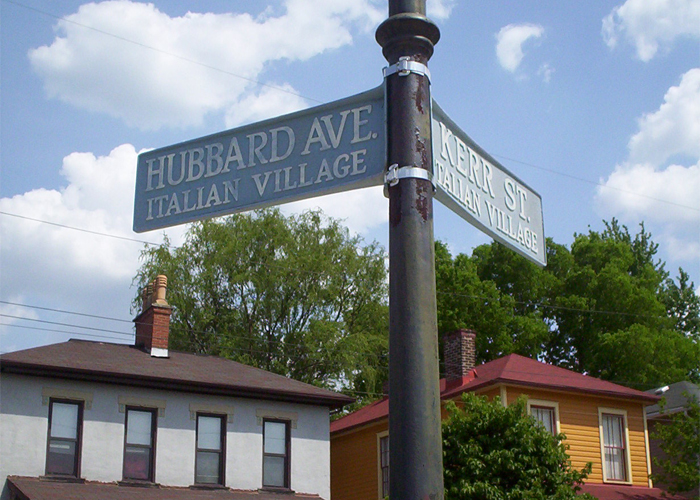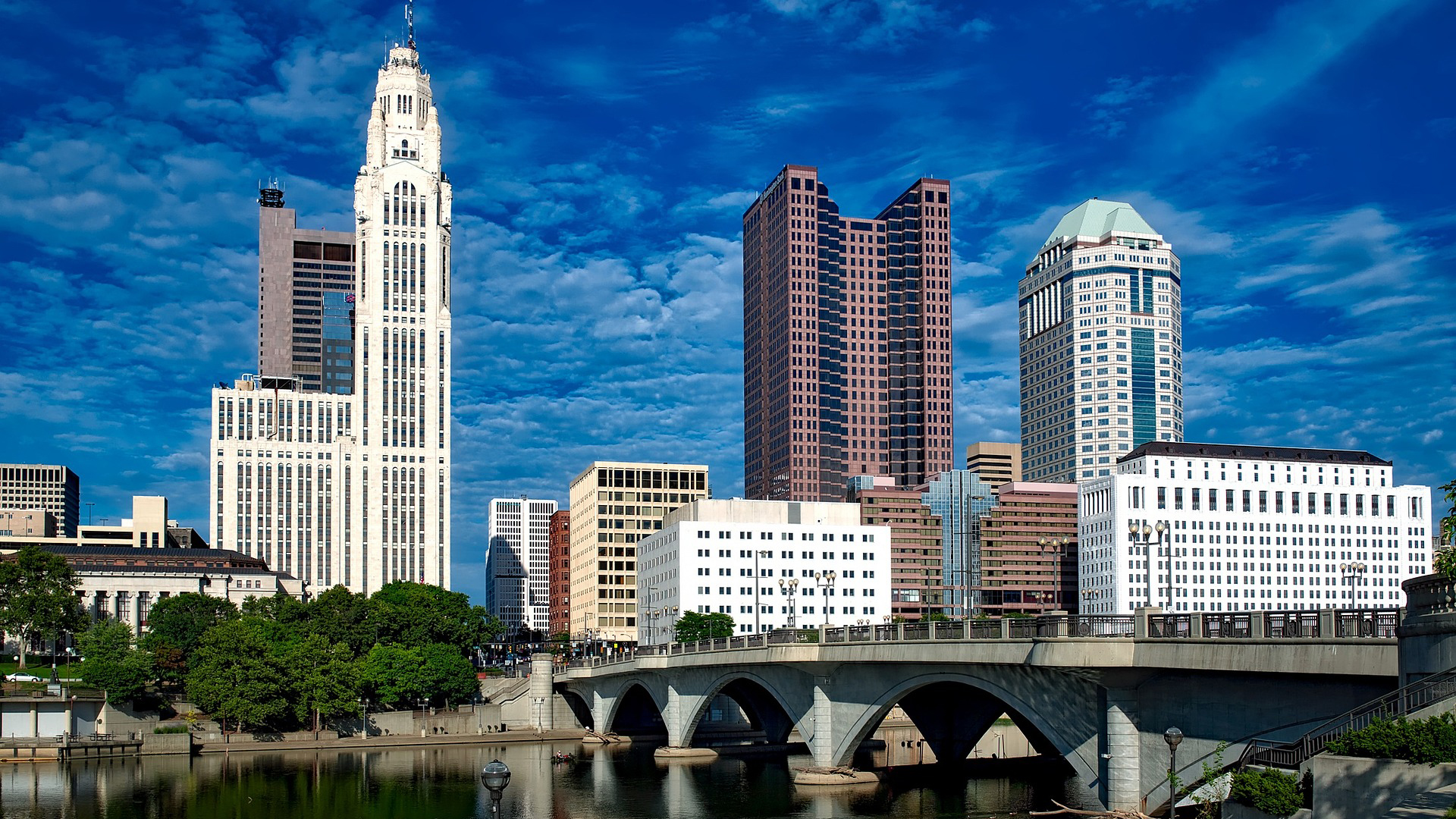Columbus, the capital city of Ohio, was named after 15th-century Italian explorer Christopher Columbus at the city's founding in 1812. It is the largest city in the world named after the explorer, although there is no history or connection as to why the Italian explorer’s name was chosen for the city. By 1860, a majority of Columbus' 18,000 residents were German and Irish immigrants. Unlike nearby Chicago, Columbus didn't have the same industry and work opportunities for immigrants - fewer southern European immigrants moved to Columbus in the early years of the 20th century. However, in the year 1900, Columbus started to grow and become an important transportation and commercial center with a population that exceeded 125,000. Italian immigrants started settling in Columbus between 1900 and 1920, in what is now known as Italian Village in the city.
Italian Village

(Photo Credit: Columbusite via wikimedia commons)
Located on the northside of Columbus, Italian Village is one of the first suburbs that was established in the capital city. There was little accessibility to this area until 1823 when the Columbus-Worthington Pike (High Street) was built and provided access to the area. As residential growth blossomed, the city acquired the land in 1863 making it part of the city limits. Street car service and the development of the North Columbus Street Railway Company allowed Italian Village to flourish.
Historically, Italian Village has been a diverse area although it got its name because of the high concentration of Italians. In 1896, St. John the Baptist Italian Catholic Church was established and helped to shape the Italian-American community and it became a prominent Italian landmark and a center for the Italian-Catholic community.
Like most immigrants who started a new life in poverty, money was not always in abundance and food was expensive. The Italian businesses that formed in the Italian Village established an honor system with customers. Shoppers had the ability to start a running bill or “open a tab” to pay back shop owners when they could, even if it wasn’t the full amount. Unlike other food stores, Italian markets offered more affordable options. The Great Depression brought attention to Italian cuisine because the homegrown food was much less expensive and the owners of Italian markets kept similar food practices of that in their homeland - eating quality ingredients at a low cost.
Italian Culture in Columbus

(Photo Credit: AJ Forrisi)
While the Italian population has changed over time, Italian pride continues to thrive. In 1980, the Columbus Italian Festival was established when the United States declared it was the “year of the family.” Fr. Casto Marrapese who was the head priest of St. John the Baptist church created the event to bring Italian Americans together to share religious values and celebrate Italian heritage.
Fr. Casto announced the event in the church’s Sunday bulletin, “The reason is simple: these three elements represent the basic characteristics of the Italian people and their culture.”
The first festival was attended by over 10,000 people, making news in the Columbus Dispatch. The article read, “Columbus’ first Italian Festival at the Lausche Building was such a success that it suffered from an unusual pain: too many people, causing the fire marshal’s order the closing of the building a couple of times.”
The festival is still held today during the first week of October each year. Other Italian cultural events still go on in the capital city like the Columbus Day parade, a bocce ball competition, Italian cooking demonstrations, as well as many others.
Modern Day Columbus

Columbus has many organizations that continue to promote and protect Italian American culture. In 1972, the Italian Village Society was formed by citizens and business owners of the city to work with the Italian Village Commission and the City of Columbus Historic Preservation Office to help enhance the historic area of the Italian Village. Through the Italian Village Commission, seven mayoral appointees have assisted in the preservation of architectural features within the neighborhood. There is meaningful street art throughout the area, including a portrait of the Mona Lisa along the North High Street commercial district.
The Columbus Italian Club (CIC) is a physical reminder of the hard work, dedication, and funds the Italian community has put into the community. The CIC is a gathering place for all to come together and share Italian American values. With weekly meetings, annual events, and high school scholarships for students of Italian descent, the CIC is working hard to preserve Italian heritage in their community.
AJ Forrisi
Assistant Editor for America Domani, AJ Forrisi is a Brooklyn-based writer and photographer. His work focuses on food, travel, sports, landscapes, and urban scenes. You can find him on Instagram @aj.photo.works.


